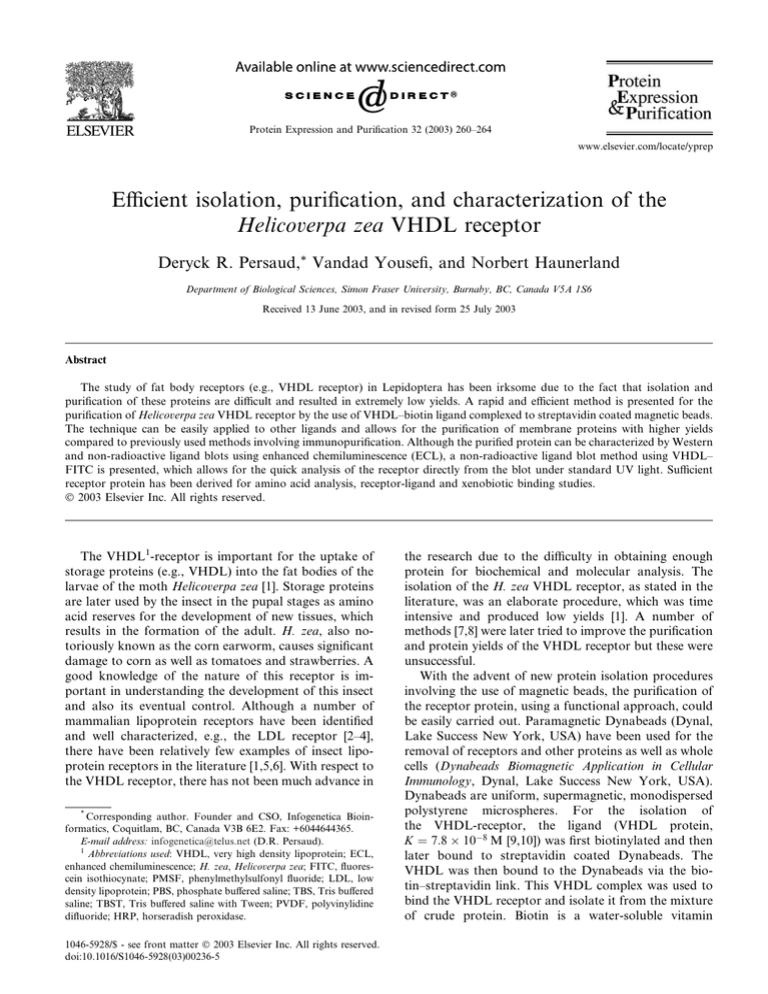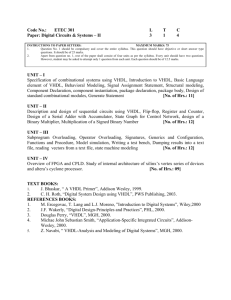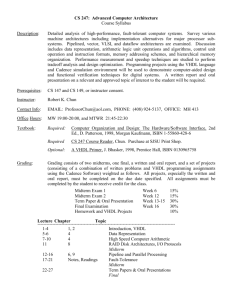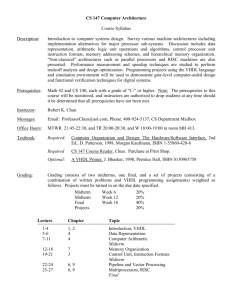
Protein Expression and Purification 32 (2003) 260–264
www.elsevier.com/locate/yprep
Efficient isolation, purification, and characterization of the
Helicoverpa zea VHDL receptor
Deryck R. Persaud,* Vandad Yousefi, and Norbert Haunerland
Department of Biological Sciences, Simon Fraser University, Burnaby, BC, Canada V5A 1S6
Received 13 June 2003, and in revised form 25 July 2003
Abstract
The study of fat body receptors (e.g., VHDL receptor) in Lepidoptera has been irksome due to the fact that isolation and
purification of these proteins are difficult and resulted in extremely low yields. A rapid and efficient method is presented for the
purification of Helicoverpa zea VHDL receptor by the use of VHDL–biotin ligand complexed to streptavidin coated magnetic beads.
The technique can be easily applied to other ligands and allows for the purification of membrane proteins with higher yields
compared to previously used methods involving immunopurification. Although the purified protein can be characterized by Western
and non-radioactive ligand blots using enhanced chemiluminescence (ECL), a non-radioactive ligand blot method using VHDL–
FITC is presented, which allows for the quick analysis of the receptor directly from the blot under standard UV light. Sufficient
receptor protein has been derived for amino acid analysis, receptor-ligand and xenobiotic binding studies.
Ó 2003 Elsevier Inc. All rights reserved.
The VHDL1-receptor is important for the uptake of
storage proteins (e.g., VHDL) into the fat bodies of the
larvae of the moth Helicoverpa zea [1]. Storage proteins
are later used by the insect in the pupal stages as amino
acid reserves for the development of new tissues, which
results in the formation of the adult. H. zea, also notoriously known as the corn earworm, causes significant
damage to corn as well as tomatoes and strawberries. A
good knowledge of the nature of this receptor is important in understanding the development of this insect
and also its eventual control. Although a number of
mammalian lipoprotein receptors have been identified
and well characterized, e.g., the LDL receptor [2–4],
there have been relatively few examples of insect lipoprotein receptors in the literature [1,5,6]. With respect to
the VHDL receptor, there has not been much advance in
*
Corresponding author. Founder and CSO, Infogenetica Bioinformatics, Coquitlam, BC, Canada V3B 6E2. Fax: +6044644365.
E-mail address: infogenetica@telus.net (D.R. Persaud).
1
Abbreviations used: VHDL, very high density lipoprotein; ECL,
enhanced chemiluminescence; H. zea, Helicoverpa zea; FITC, fluorescein isothiocynate; PMSF, phenylmethylsulfonyl fluoride; LDL, low
density lipoprotein; PBS, phosphate buffered saline; TBS, Tris buffered
saline; TBST, Tris buffered saline with Tween; PVDF, polyvinylidine
difluoride; HRP, horseradish peroxidase.
1046-5928/$ - see front matter Ó 2003 Elsevier Inc. All rights reserved.
doi:10.1016/S1046-5928(03)00236-5
the research due to the difficulty in obtaining enough
protein for biochemical and molecular analysis. The
isolation of the H. zea VHDL receptor, as stated in the
literature, was an elaborate procedure, which was time
intensive and produced low yields [1]. A number of
methods [7,8] were later tried to improve the purification
and protein yields of the VHDL receptor but these were
unsuccessful.
With the advent of new protein isolation procedures
involving the use of magnetic beads, the purification of
the receptor protein, using a functional approach, could
be easily carried out. Paramagnetic Dynabeads (Dynal,
Lake Success New York, USA) have been used for the
removal of receptors and other proteins as well as whole
cells (Dynabeads Biomagnetic Application in Cellular
Immunology, Dynal, Lake Success New York, USA).
Dynabeads are uniform, supermagnetic, monodispersed
polystyrene microspheres. For the isolation of
the VHDL-receptor, the ligand (VHDL protein,
K ¼ 7:8 108 M [9,10]) was first biotinylated and then
later bound to streptavidin coated Dynabeads. The
VHDL was then bound to the Dynabeads via the biotin–streptavidin link. This VHDL complex was used to
bind the VHDL receptor and isolate it from the mixture
of crude protein. Biotin is a water-soluble vitamin
D.R. Persaud et al. / Protein Expression and Purification 32 (2003) 260–264
belonging to the B-complex group of vitamins. This
vitamin displays one of the highest affinities amongst
biomolecules; for example, it binds to avidin
(K ¼ 1015 M) and streptavidin (K ¼ 1014 M). The
nature of the strong and specific binding of streptavidin
to biotin also proved useful for isolation of the VHDL
receptor whose identity was confirmed by Western and
ligand blots.
261
gentle rocking. The overnight mixture was then centrifuged at 100,000g for 1 h at 4 °C. The supernatant
(Fraction F) was carefully pipetted out and placed into a
clean Eppendorf tube. The subnatant (Fraction E) was
resuspended in 100 lL protein extraction buffer. Both
supernatant and subnatant were stored at )20 °C until
required for analysis.
Purification of VHDL receptor protein on Dynabeads
Methods
Insect rearing
Helicoverpa zea colonies were reared in a controlled
environment. The temperature was maintained at 26 °C.
Eggs (AgriPest, Zebulon, NC) were hatched on paper
towels enclosed in plastic bags. Once hatched, the larvae
were immediately placed into plastic containers containing an artificial diet (Corn Earworm Diet, Southland
Products, Lake Village, AR). After the larvae had
reached the 3rd instar, they were placed into individual 2
oz cups filled with 2 mL of diet. The cups were sealed
with a perforated lid (Dixie PL2) to allow for the exchange of gases. After approximately a week, the larvae
turned into pupae; adult ecdysis occurred between 10
and 14 days afterwards.
Crude preparation of the VHDL receptor
Perivisceral fat body tissues were isolated from 5 to 8days-old 5th instars. Hemolymph was first removed by
bleeding the insect through an excised proleg. The larvae
were dissected and the remaining hemolymph was washed away with protein extraction buffer. The fat bodies
from 10 larvae (450 mg, wet weight) were excised out
and placed immediately in 6 mL cold protein extraction
buffer at 4 °C, (50 mM Tris–base, 150 mM NaCl, 1%
Nonidet P-40, and 1 mM PMSF, and pH 7.8). The fat
body tissues were completely homogenized using a
polytron homogenizer set at maximum speed. The homogenized tissues were first centrifuged at 800g for 1 h
at 4 °C. The supernatant (Fraction B) was poured out
into a clean protease-free tube. The subnatant (Fraction
A) was stored at )20 °C and later used for analysis. A
1 mL aliquot of Fraction B was stored at )20 °C for use
in Western and ligand blots. The rest of the isolate
(Fraction B) was centrifuged at 30,000g for 1 h at 4 °C.
The supernatant (Fraction D) was carefully poured into
a clean tube, stored at )20 °C, and later used for analysis. A 1 mL aliquot of the subnatant (Fraction C) was
removed and stored at )20 °C for Western and ligand
blots. The remainder of Fraction C was washed twice
with protein extraction buffer and then placed in 200 lL
of 2% solution of Triton X-100. The detergent mixture
was then gently vortexed and left overnight at 4 °C with
Protein biotinylation was done using the ECL protein
biotinylation system (Amersham–Pharmacia Biotech,
Piscataway, NJ). Protein stock solutions of VHDL were
prepared to a concentration of 1 mg/mL in bicarbonate
buffer. One hundred microliters of biotinylation reagent
(N-hydroxysuccinimide-biotin ester) was added to a
2.5 mL aliquot of the protein stock solution and the
mixture was incubated for 1 h under constant agitation.
The labeled protein was then loaded onto a Sephadex
G25 column (1 cm 10 cm), later eluted with 5 mL PBS,
and stored at 4 °C. Streptavidin coated M-280 Dynabeads (Dynal, Lake Success New York, USA) were
prepared and conditioned for use according to manufacturerÕs protocols. However, it was found appropriate
to replace the traditional washing buffer with special
VHDL ligand binding buffer (20 mM Tris–HCl, 0.15 M
NaCl, 4 mM CaCl2 , and 0.1% Triton X-100, and pH 7.0)
during all washing steps. Lyophilized VHDL–biotin was
dissolved in 100 lL ligand binding buffer to make a final
concentration of 1 lg/lL. One hundred microliters
streptavidin coated Dynabeads was incubated with
100 lL of biotinylated VHDL for 90 min at r.t. with
gentle mixing using a Dynal Sample Mixer (Dynal, Lake
Success New York, USA). The beads were washed twice
with ligand binding buffer. Washing steps were carried
out using a Dynal MPC magnetic holder. The VHDL–
biotin–streptavidin–Dynabeads complex was stored at
4 °C. For receptor isolation, it was found useful to utilize the Fraction D and Fraction F (from the crude
preparation as stated earlier) as these showed the greater
presence of the receptor in Western blots. The crude
receptor isolate (1 lg/lL) was first desalted (Spectra/Por
1, 8000 Da cutoff; Spectrum, Houston, Texas, USA) and
lyophilized before being redissolved in 100 lL ligand
binding buffer. The redissolved crude isolate was then
incubated with the VHDL–biotin–streptavidin–Dynabeads complex for 60 min at room temperature under
gentle mixing. The Dynabeads were then washed three
times with ligand binding buffer, each washing being for
5 min duration. To remove the wastes, the Eppendorf
containing the beads was then placed into a magnetic
holder for 2 min, which caused the beads to align
themselves to the sides of the Eppendorf. All waste solutions (e.g., VF1, VF2, and VF3 fractions) were then
pipetted out and kept for analysis to monitor the VHDL
and receptor binding efficiency. After the washing steps,
262
D.R. Persaud et al. / Protein Expression and Purification 32 (2003) 260–264
the beads were incubated with elution buffer (20 mM
Tris–HCl, 0.15 M NaCl, 0.17 mM PMSF, 0.1% Triton
X-100, and pH 9.5) for 5 min. The elution buffer had a
higher pH and contained no calcium ions (compared to
the ligand binding buffer), which are not optimum
binding conditions for the VHDL ligand and its receptor [10]. The mixture was then placed a magnetic holder
and the receptor eluent was pipetted out. The eluted
VHDL receptor (VE1 fraction) was then stored at
)20 °C. For analytical purposes, 20 lL of all washes and
of the eluted receptor protein was used in SDS–PAGE,
Western and ligand blots. The used beads can be stored
at 4 °C in ligand binding buffer containing sodium azide
(0.01%) for 6 months.
Protein assay
Protein quantification was carried out using a commercial kit (Bio-Rad Protein Assay, BioRad laboratories, California), which was based on the method of
Bradford [11]. The assay was performed according to
manufacturerÕs protocol. Absorbance readings were taken at 595 nm.
Protein separation and transfer to PVDF membrane
Separation of proteins was achieved using an SDS–
PAGE gel (stacking gel 4% [from a 40% acrylamide/bisacrylamide mixture, 37.5:1; Bio-Rad Laboratories,
California] and a 12% resolving gel [40% acrylamide/bisacrylamide]) [12]. Before loading, 20 lL of protein
loading dye was added to the 20 lL of protein samples
and the entire mixture was boiled for 10 min. Forty
microliters of the prepared samples was loaded into each
well. The separation was carried out either on a Miniprotein II electrophoresis Cell (BioRad Laboratories) or
on a Mighty Small SDS–PAGE apparatus (Hoefer Scientific Instruments, San Francisco, CA). The settings for
the BioRad instrument were 30 mA for 1 h and 50 mA
for 3 h using the Mighty Small equipment. A polyvinylidine difluoride (PVDF) membrane was conditioned
by soaking it in 100% methanol for 5 min, after which, it
was rinsed with transfer buffer and then left wet in
transfer buffer. Whatman 3M filter paper was cut to the
size of the resolving gel and soaked in transfer buffer.
The gel was placed onto the PVDF membrane and then
sandwiched between the layers of wet filter papers. The
transfer of protein onto the membrane was carried out
for 7 h at a constant voltage of 200 mV using a semi-dry
ElectroBlotting apparatus (Pharmacia LKB, Sweden).
Western and non-radioactive ligand blotting
The blotted PVDF membrane was removed from the
blotting apparatus and rinsed with transfer buffer. The
membrane was immediately placed into a filtered solu-
tion of 5% milk powder (Carnation milk powder) and
incubated for 1–2 h under gentle agitation. Membranes
were washed three times with TBST, each wash being of
15 min duration. Primary rabbit anti-VHDL-receptor
antibodies (1:5000) were added to the membrane and
incubated for 1 h under gentle rocking [13]. The membrane was washed three times for 15 min duration as
described above. Secondary antibody (goat anti-rabbit–
HRP conjugate, BioRad Laboratories) was added at a
concentration of 1:10,000 and the mixture was left for
1 h at room temperature. The membrane was washed
and then drained to remove excess liquid. Detection of
the protein of interest was obtained by chemiluminescence detection using the ECL kit from Amersham–
Pharmacia Biotech. For detection of each reaction, 3 mL
of ECL reagent 1 and 3 mL of ECL reagent 2 were
mixed together and quickly poured over the moist
membrane. The membrane was enclosed in a piece of
saran wrap and exposed to X-ray film using an X-ray
film cassette. Detection of positive signals on the X-ray
film occurred in as little as 5 s. The exposed X-ray films
were developed using an automated photo image developer system.
Dot blots and normal SDS–PAGE blots were prepared for Western blot of the crude fractions of the
VHDL receptor. For dot blots, equal amounts of protein
(pure VHDL, pure VHDL-receptor stock, 30,000 supernatant {Fraction D}, and bovine serum albumin, and
VE1) were blotted onto a pre-conditioned PVDF membrane by using a dot-blotter (Bio-Dot Microfiltration
Apparatus, BioRad Laboratories). For normal SDS–
PAGE blots, 20 lL of equal amounts of protein (VE1,
pure VHDL-receptor, and, BSA) was resolved on a 12%
SDS–PAGE gel. The concentrations of primary (rabbit
anti-VHDL) and secondary antibodies (goat anti-rabbit–
HRP conjugate) were 1:3000 and 1:5000, respectively.
For Non-radioactive ligand blots, the VHDL ligand
was conjugated to FITC. This VHDL–FITC (FITC,
Fluorescein Isothiocyanate) complex was prepared by
using the FluoroTag FITC Conjugation Kit (Sigma, St.
Louis MO, USA). Lyophilized and dialyzed VHDL was
dissolved in 0.1 M carbonate buffer, pH 9.0, to make a
1.0 mg/mL protein solution. The conjugation of FITC to
1 mg of VHDL was carried out according to manufacturerÕs protocol using one of the following molar ratios
in the reaction mixture: 5:1, 10:1, and 20:1 of FITC
(MW 389) to VHDL (MW 150,000). Each of the vials
containing the reaction mixtures was sealed in aluminium foil and incubated for 2 h at room temperature.
Three Sephadex G-25M columns were labelled 5:1, 10:1,
and 20:1. The protein/FITC mixture was then added to
each of the columns. To obtain the purified VHDL–
FITC complex, the columns were eluted with 2.5 mL
PBS. As the samples were eluting, 0.25 mL fractions
were collected and absorbance readings (at 280
and 495 nm) were taken. Protein fractions with an
D.R. Persaud et al. / Protein Expression and Purification 32 (2003) 260–264
absorbance ratio (A280/A495 ¼ 1.0) were used in ligand
blot experiments. Molar ratios of FITC–VHDL (10:1)
gave the best results for ligand blot experiments. For
normal SDS–PAGE blots, 20 lL of equal amounts of
protein (VE1, pure VHDL-receptor, and BSA) were
resolved on a 12% SDS–PAGE gel. The primary incubation step was with VHDL–FITC (1:5000) and the
secondary incubation step was with anti-FITC–HRP
conjugate (1:5000). The VHDL–FITC could also be
used to identify the receptor directly on the blot under
UV light using the 1:5000 dilution.
Results and discussion
The VHDL-receptor was not found in the hemolymph of 5–8-days-old 5th larval instar. However, it was
found most commonly in the 800g precipitate (Fraction
A) and the 30,000g supernatant (Fraction D) fraction of
the fat body isolate (Fig. 1). The 100,000g subnatant and
supernatant (Fractions E and F) also showed the presence of the VHDL-receptor. A possible explanation for
the presence of the positive signals in the 30,000g supernatant (Fraction D) could be due to the presence of
proteins with similar epitopes that are recognized by the
VHDL-receptor antibodies. This is a reasonable concern
because many insect larval hemolymph proteins belong
to the hemocyanin superfamily. Since positive signals
were not detected in hemolymph but only in fat body
tissues, it implies that in the final few days of the last
instar, the VHDL-receptor is found only in fat body
tissues. The presence of the receptor in the 30,000g supernatant would suggest that the receptor is most likely
a peripheral protein or a weakly attached integral
membrane protein that is easily separated from the cell
membrane without the use of non-ionic detergents. The
purification of the VHDL receptor using Dynabeads
was effective and led to protein of about 98% purity and
a yield of 100 lg (0.022%). On a 12% SDS–PAGE gel, a
single protein band (80 kDa) was detected from the
VE1 eluted fraction (Fig. 2). This fraction is believed to
Fig. 1. Western blot of the various fractions obtained during the isolation of VHDL receptor. For Lanes 1–5, 1 lg of protein was loaded
on the SDS–PAGE gels. In lanes 6 and 7, 0.2 lg of protein was loaded
on the SDS–PAGE gels. The receptor was identified by Western blot
using anti-VHDL receptor primary antibodies (1:10,000) and goatanti-rabbit-Ig HRP conjugate (1:3,000). Lane 1, protein markers. Lane
2, Helicoverpa zea hemolymph. Lane 3, 800g pellet (Fraction A). Lane
4, 30,000g supernatant (Fraction D). Lane 5, 100,000g pellet (Fraction
E). Lane 6, 100,000g supernatant (Fraction F). Lane 7, pure VHDL
receptor [13].
263
Fig. 2. SDS–PAGE gel of various fractions from the purification of the
VHDL-receptor by Dynabeads. Lane 1, first wash step (VF1). Lane 2,
second wash step (VF2). Lane 3, third wash step (VF3). Lane 4, purified VHDL-receptor isolate (VE1). Lane 5, broad range protein
markers (New England Biolabs, Beverly MA, USA).
Fig. 3. (A) SDS–PAGE Western blot. Lane 1, VE1 isolate. Lane 2,
pure VHDL-receptor (control). Lane 3, protein markers. Lane 4, bovine serum albumin. (B) Normal SDS–PAGE ligand blot (VHDL–
FITC). Lane 1, VE1 isolate. Lane 2, pure VHDL-receptor (control).
Lane 3, protein markers. Lane 4, bovine serum albumin.
contain the VHDL-receptor. The final washing step
(VF3) showed no presence of proteins and hence suggests that the elution step was effective in dissociating
the bond between the VHDL–biotin–streptavidin–
Dynabeads and the VHDL receptor. Dot blots initially
helped in optimizing the conditions for obtaining a
strong positive signal on normal Western and ligand
blots. The SDS–PAGE Western blot showed that the
protein band was of the correct molecular weight
(Fig. 3A). With ligand blots, the identity of the VE1
isolate was also confirmed (Fig. 3B).
This rapid purification scheme stated here in this
paper allows for sufficient amount of VHDL-receptor to
be isolated to be used in amino acid analysis and for
ligand binding studies. Current work being carried out
involves the development of a suitable non-radioactive
ligand binding assay for in-depth receptor-ligand binding studies and the determination of the amino acid
sequence of this protein, molecular cloning, and recombinant expression. Future work will incorporate the
determination of other ligands (e.g., chemical compounds) which will bind to the receptor and inhibit or
stimulate its function. Such lead compounds can lead to
further understanding of storage protein uptake and
hence insect development. In addition, potential inhibitors of receptor activity can be used to design novel
pesticides.
264
D.R. Persaud et al. / Protein Expression and Purification 32 (2003) 260–264
References
[1] Z. Wang, N.H. Haunerland, Receptor-mediated endocytosis of
storage proteins by the fat body of Helicoverpa zea, Cell Tissue
Res. 278 (1994) 107–115.
[2] W.J. Schneider, J.L. Goldstein, M.S. Brown, Partial purification
and characterization of the low density lipoprotein receptor from
bovine adrenal cortex, J. Biol. Chem. 255 (1980) 11442–11447.
[3] W.J. Schneider, J.L. Goldstein, M.S. Brown, Purification of the low
density lipoprotein receptor: an acidic glycoprotein of 164,000 Da
molecular weight, J. Biol. Chem. 257 (1982) 2664–2673.
[4] W.J. Schneider, C. Slaughter, J.L. Goldstein, R.G.W. Anderson,
D.J. Capra, M.S. Brown, Use of anti-peptide antibodies to
demonstrate external orientation of the NH2 -terminus of the low
density lipoprotein receptor in the plasma membrane of fibroblasts, J. Cell Biol. 97 (1983) 1635–1640.
[5] T.W. Sappington, A.S. Raikhel, Insect vitellogenins and receptors,
Insect Biochem. Mol. Biol. 28 (1998) 277–300.
[6] K. Tsuchida, M. Wells, Isolation and characterization of a
lipoprotein receptor from the fat body of an insect, Manduca
Sexta, J. Biol. Chem. 265 (1990) 5761–5767.
[7] E.C. Hulme, Receptor-binding studies, a brief outline, in: E.C.
Hulme (Ed.), Receptor Biochemistry: A Practical Approach, IRL
Press, New York, 1990, pp. 1–15.
[8] A. Levitzki, Receptors: A Quantitative Approach, The Benjamin/
Cummings Publishing Company Inc., Menlo Park, CA, 1984.
[9] N.H. Haunerland, S. Bowers, A larval specific lipoprotein:
purification and characterization of a blue chromoprotein from
Heliothis zea, Biochem. Biophys. Res. Commun. 134 (1986) 580–
586.
[10] Z. Wang, N.H. Haunerland, Storage protein uptake in Helicoverpa zea: arylphorin and VHDL share a single receptor, Arch.
Insect Biochem. Physiol. 26 (1994) 15–26.
[11] M.M. Bradford, A rapid and sensitive method for the
quantitation of microgram quantities of protein utilizing the
principle of protein-dye binding, Anal. Biochem. 72 (1976)
248–254.
[12] U.K. Laemmli, Cleavage of structural proteins during the
assembly of the head of bacteriophage T4, Nature 227 (1970)
680–685.
[13] Z. Wang, N.H. Haunerland, Storage protein uptake in Helicoverpa zea, J. Biol. Chem. 268 (1993) 16673–166678.





